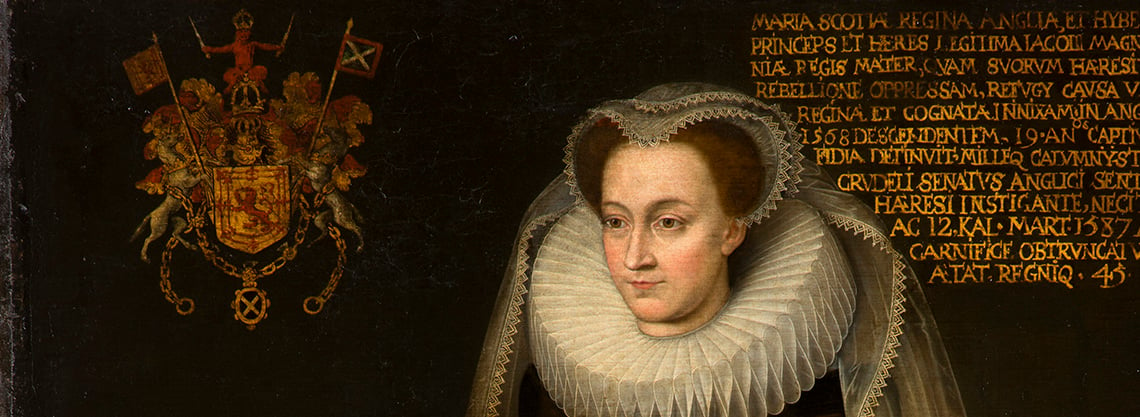Mary, Queen of Scots (1542-1587)
The chambers at Holyrood are filled with items associated with Mary

Mary, Queen of Scots, daughter of James V (1512–42), succeeded to the throne of Scotland on her father's death in 1542, when she was only a few days old. When Henry VIII (1491–1547) tried to force the Scots to accept a marriage between his son Prince Edward (the future Edward VI) and the infant Mary, both the Palace of Holyroodhouse and Holyrood Abbey were attacked by English troops. In 1548 Mary was sent to France to be brought up in safety at the French court, leaving Scotland in the care of her mother, Mary of Guise (1515–60).
Ten years later Mary, Queen of Scots married the Dauphin, the heir to the French throne. Following the sudden death of Henry II of France in 1559, Mary's husband succeeded as Francis II (1544–60), but died the following year, aged only 16. The young Queen returned to Scotland in 1561, a Catholic in a strongly Protestant country. She came to live at the Palace of Holyroodhouse, occupying the Queen's Apartments on the second floor of the tower built by her father James V.
Many of the most significant events of Mary's short reign took place at the Palace of Holyroodhouse. She married her second husband, Henry Stuart, Lord Darnley (1545–67), in the Palace chapel in 1565, and her Italian secretary, David Rizzio (c.1533–66), was murdered by Darnley in her private apartments in 1566. Mary then fled the Palace, giving birth to her son James a few months later at Edinburgh Castle.
In 1567, after Darnley's death under mysterious circumstances, Mary married her third husband, James Hepburn, Earl of Bothwell (c.1534–78), in the Palace of Holyroodhouse. The marriage was universally condemned (not least as Bothwell was implicated in Darnley's murder) and after a confrontation with the Scottish nobility at Carberry Hill outside Edinburgh, Mary was imprisoned and forced to abdicate in favour of her infant son.
Mary escaped and finally left Scotland for England in 1568. She was kept captive by Elizabeth I (1533–1603), who feared she would become a focus for Catholic conspiracies against the throne. In 1587, after the discovery of the Babington Plot against Elizabeth, Mary was executed at Fotheringay Castle.
The reign of Mary, Queen of Scots was short, turbulent and replete with dramatic episodes. From the end of the eighteenth century fascination grew around her doomed fate. The housekeeper of the Duke of Hamilton (Hereditary Keeper of the Palace of Holyroodhouse) regularly showed visitors around Mary's apartments in expectation of a small payment. As they led visitors through the rooms they described in grisly detail Rizzio's murder, using an alleged bloodstain on the floor as illustration. As part of this simulated history, many of the 'old-fashioned' furnishings from the Duke of Hamilton's apartments were moved to Mary's chambers and gradually became passed off as her own possessions. Today, visitors to Holyroodhouse can still experience the powerful and romantic mood of Mary, Queen of Scots' Chambers.







